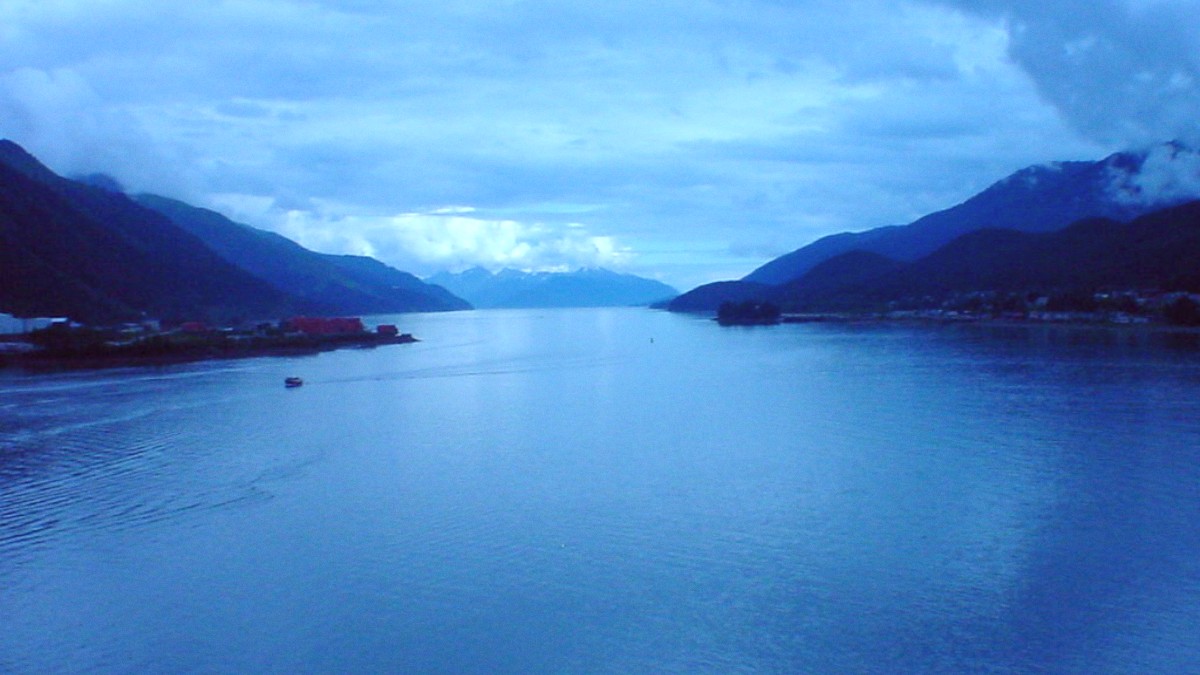
Alaska, USA
Spring (April-May): Temperatures typically range from 40s-50s°F (4-10°C). Rainfall occurs less frequently than in summer. Crowds are less dense.
Summer (June-August): This period brings the warmest temperatures, from 50s-60s°F (10-18°C), occasionally reaching into the 70s°F (20s°C). Summer also brings the most rain. Long daylight hours are a feature, with up to 18-20 hours of light in June.
Autumn (September-October): Temperatures decline to 40s-50s°F (4-10°C). Rainfall grows noticeably. Fall colors begin to appear.
Winter (November-March): Temperatures range from 20s-30s°F (-6-4°C). Snowfall is common, especially at higher elevations. Daylight hours are very short.
Different activities have optimal viewing or participation times:
Whale Watching (Humpback & Orca): Mid-May to September, with peak viewing from June to August.
Bear Viewing: Late May and early June offer chances to see cubs. Late July to September presents prime viewing as bears gather for salmon runs.
Glacier Viewing: June to August offers the best weather for glacier viewing.
Hiking: July and August provide the driest trails.
Fishing: King Salmon are best caught from May to July, and Silver Salmon from July to September.
Warmest, Peak Activity
Full operation of tours, peak wildlife opportunities, warmest temperatures.
Highest prices, largest crowds, increased mosquito activity.
Fewer Crowds, Good Wildlife
Fewer crowds, potentially lower prices, good whale/bear viewing.
Cooler temperatures, more rain, limited tour schedules early/late season.
Lowest Prices, True Local Feel
Lowest prices, very few tourists, winter activities (further north for Northern Lights).
Cold temperatures, limited daylight, many businesses closed, limited cruise options.
The Inside Passage's temperate rainforest climate indicates consistent rain. Fog might occur, which affects visibility for scenic flights. Winds can make boat travel choppy. Proper packing for variable conditions is advisable.
Weather in Alaska can change rapidly. Layers of clothing, including waterproof outer shells, support comfort in fluctuating conditions. Checking local forecasts before excursions is a prudent step.
Mid-May to September (Peak: June-August).
Late May-Early June (cubs), Late July-Sept (salmon runs).
June to August (best weather).
July and August (driest trails).
King Salmon (May-July), Silver Salmon (July-September).
Travel to Alaska's Inside Passage aligns with standard United States entry requirements.
For U.S. Citizens, no visa becomes necessary. For non-U.S. Citizens, specific requirements apply:
Ensure you carry these documents:
The United States Dollar (USD) serves as the currency. Credit cards are widely accepted throughout Alaska, especially in larger towns and on cruise ships. ATMs are available in all port towns for cash withdrawals. Currency exchange is available at major airports or banks, though these locations frequently present less favorable rates than your bank's ATM. A travel-friendly credit card without foreign transaction fees warrants consideration.
Standard U.S. Entry requirements pertain. Consult a medical professional for advice on routine vaccinations (e.g., MMR, DTP, Polio). They might suggest additional vaccinations like Hepatitis A & B, or Rabies if extensive outdoor activities or direct contact with wildlife are planned.
This frequently occurs on cruises or small boat excursions. Non-drowsy medications like Bonine chewable tablets or prescription options like Transderm Scop patches are considerations.
Sunscreen application with at least SPF 30 and wearing Sunglasses are advisable, even on cloudy days.
Mosquitoes and gnats might appear. Insect repellent application with DEET or picaridin, such as Sawyer Products MAXI-DEET 100% DEET Insect Repellent or Sawyer Products Picaridin Insect Repellent, is recommended. Consider treating clothing with Sawyer Products Permethrin Insect Repellent.
Wildlife Encounters:
Keep a safe distance from all wildlife. Never feed animals. Food storage should be proper when hiking or camping. For remote hiking, bear spray carriage and proper usage are advisable. LifeStraw offers water filtration products for outdoor adventures.
Hydration maintains wellness, specifically during active excursions or long days. Carry a reusable water bottle. Healthcare facilities exist in larger towns (Juneau, Ketchikan, Sitka); smaller towns possess clinics. Emergency services function via 911. Cruise ships commonly maintain medical facilities. Severe medical conditions could necessitate evacuation.
Tap water in all Alaskan towns and on cruise ships is potable. Food hygiene standards align with U.S. Regulations.
Crime rates in Alaskan port towns register as very low. Standard precautions against petty theft are prudent, especially in crowded tourist areas. No specific "no-go" neighborhoods for tourists exist.
Alaska is seismically active. While rare, tsunami warnings might occur; cruise ships and coastal towns have protocols in place.
These might occur in mountainous areas, especially during spring thaw or heavy rain. Following all local warnings and closures is advisable.
Hypothermia presents a risk in cold, wet weather without proper clothing. Dress in layers and wear waterproof outer shells.
Consider a well-stocked First aid kit, such as the Adventure Medical Kits Ultralight/Watertight .7 First Aid Kit. Keep Pacsafe anti-theft products in mind for securing valuables.
Bandages, antiseptic wipes, pain relievers, Anti-diarrhea medication, antihistamines.
Motion sickness medication, insect bite cream, blister treatment (Moleskin).
High SPF Sunscreen, Lip balm with SPF, sunglasses. Insect repellent (DEET or Picaridin).